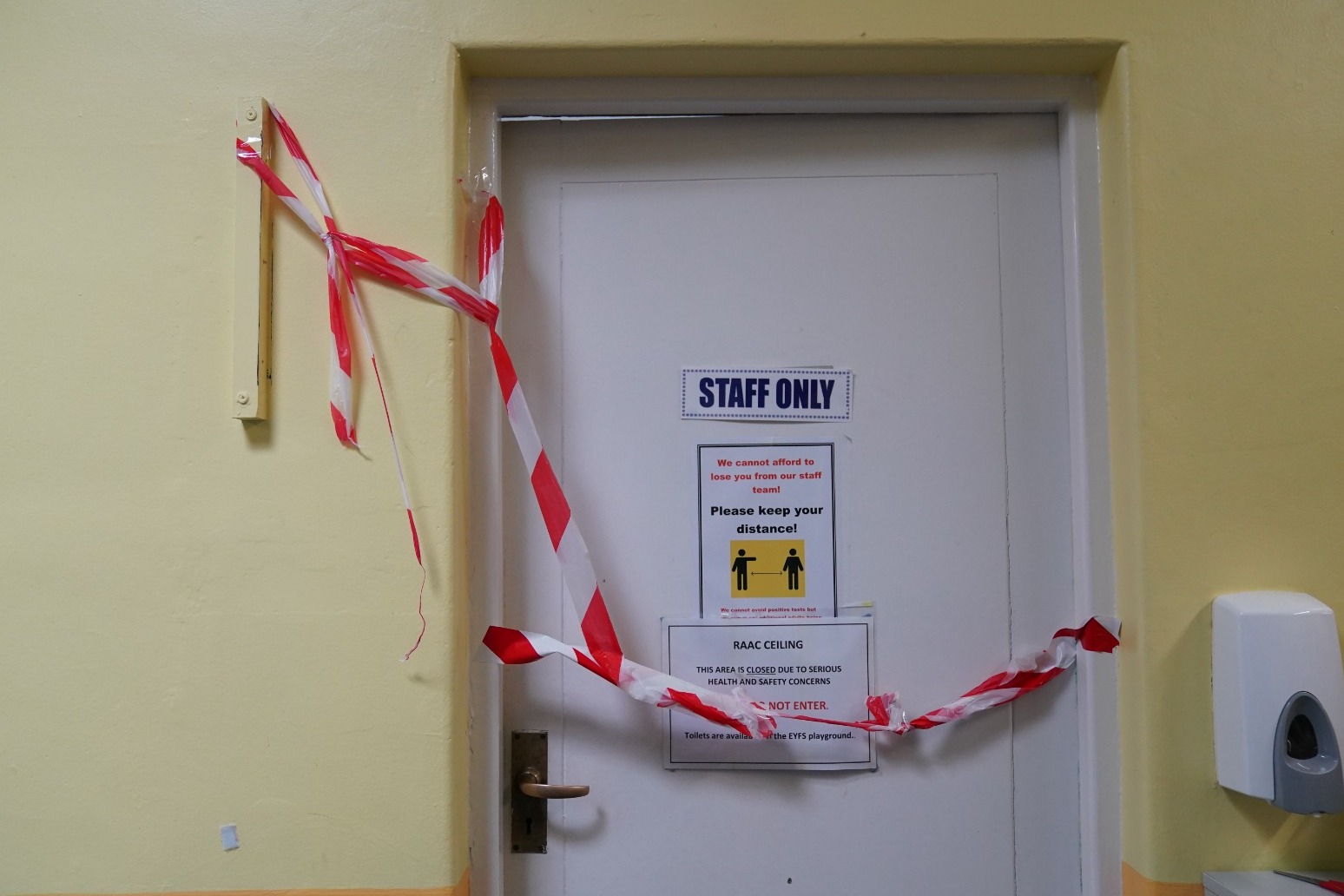
Pressure on ministers to spell out plans for schools during concrete disruption
Children are heading back to the classroom with questions remaining over concrete fears
Ministers are under pressure to spell out their plans to make schools safe from aerated concrete as pupils start the new term.
Children’s summer holidays are coming to an end and Parliament is returning from recess against a backdrop of uncertainty about how long disruption will last as any risks are mitigated.
Chancellor Jeremy Hunt moved to reassure parents the Government would “spend what it takes” to address the problem, but Treasury sources later said money for repairs would come from the Department for Education’s (DfE) existing capital budget.
More than 100 schools and colleges have been told by the Government to fully or partially shut buildings following the recent collapse of a beam previously considered safe.
But more classrooms could be forced to shut as further assessments are made of the risks of reinforced autoclaved aerated concrete (Raac) in buildings, the Government has admitted.
Shadow education secretary Bridget Phillipson said it is a “scandal that as children are just returning to school ministers are still not being upfront about the scale of what we are facing”.
“It’s vital that they publish the list of all the schools as soon as possible,” she said.
“If they don’t do that, we’ll force a vote in the House of Commons to make sure that parents can know exactly what’s going on.
“This is completely unacceptable, children have seen so much disruption to their education and ministers need to get a grip on this because this is a department that is in complete chaos.”
Education Secretary Gillian Keegan will face the morning broadcast round on Monday for the first time since the schools crisis emerged on Thursday, and as she prepares to inform Parliament this week of the Government’s plans to address the problem.
Ministers have promised to publish a list of the schools affected “in due course” but Labour has threatened to force a vote to compel its publication this week.
Remote learning for children unable to access face-to-face lessons should last “days, not weeks”, the Government has said, but ministers have not said exactly when the disruption might ease.
Education leaders have been encouraged to use community centres, empty office buildings or other schools while structural supports are installed to mitigate the risk of collapse.
Unions have been angered by uncertainty about which costs will be covered by central Government, calling for transparency on whether headteachers will be reimbursed for mitigation expenditure.
Ms Phillipson said she was concerned that “raiding” the DfE’s capital budget – money for buildings and infrastructure – to fund repairs could have a negative effect in the long-term.
The crisis over the potentially dangerous concrete will add to the challenges in Prime Minister Rishi Sunak’s intray as Parliament returns.
Concerns about Raac – a lightweight concrete used up until the mid-1990s – in public buildings were raised in 2018, prompting accusations that ministers have failed to act quick enough.
Experts have warned that the risks may extend beyond schools to hospitals, court buildings and prisons, where the material is present.
Schools in Scotland, Wales and Northern Ireland are also being assessed for Raac.
The Scottish Government has said it is present in 35 schools, but that none posed an “immediate risk” to pupil safety.
The Welsh Government said councils and colleges have not reported any presence of Raac.
Published: by Radio NewsHub